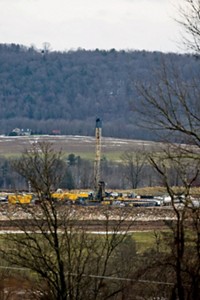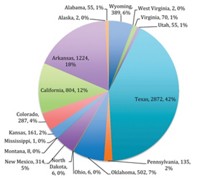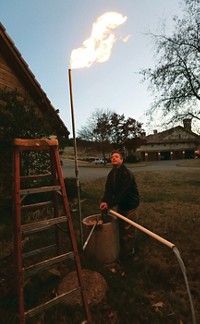Advertisement
Grab your lab coat. Let's get started
Welcome!
Welcome!
Create an account below to get 6 C&EN articles per month, receive newsletters and more - all free.
It seems this is your first time logging in online. Please enter the following information to continue.
As an ACS member you automatically get access to this site. All we need is few more details to create your reading experience.
Not you? Sign in with a different account.
Not you? Sign in with a different account.
ERROR 1
ERROR 1
ERROR 2
ERROR 2
ERROR 2
ERROR 2
ERROR 2
Password and Confirm password must match.
If you have an ACS member number, please enter it here so we can link this account to your membership. (optional)
ERROR 2
ACS values your privacy. By submitting your information, you are gaining access to C&EN and subscribing to our weekly newsletter. We use the information you provide to make your reading experience better, and we will never sell your data to third party members.
Environment
Methane Fouls Well Water
Environment: Study confirms link to gas drilling, as a new panel is formed to study public safety
by Stephen K. Ritter
May 16, 2011
| A version of this story appeared in
Volume 89, Issue 20

A study by Duke University researchers provides the first scientific confirmation of a link between natural gas drilling in organic-rich shale deposits and methane-contaminated residential well water. The study’s release has rekindled the debate among the oil and gas industry, environmental advocacy groups, and lawmakers over health and safety concerns about natural gas drilling methods, which are largely unregulated.
When environmental chemist Robert B. Jackson and coworkers at Duke University sampled 68 residential wells in south central New York and northeastern Pennsylvania, they found no evidence that chemicals used in hydraulic fracturing—or fracking, the most widely used drilling method to extract methane from shale beds—had percolated into drinking water, as some fear.
The scientists instead found that water wells within 1 km of active gas extraction sites had methane levels of 19.2 mg/L on average, compared with 1.1 mg/L on average in wells in inactive areas farther from drilling sites (Proc. Natl. Acad. Sci. USA, DOI: 10.1073/pnas.1100682108). The federal methane action level is 10 mg/L, above which ventilation is recommended for safety.
In addition, the researchers say isotopic analysis of methane and other hydrocarbons detected in the water samples indicates that most of the methane detected was from the deep shale deposits and not from natural biological decay near the surface. They speculate that the gas could come directly from the deposits but more likely stems from leaky gas wells.
Water containing dissolved methane, which is also a problem in coal-mining regions, is not considered harmful to drink. But the gas can build up inside homes and become an explosion hazard. Some residents near gas wells have discovered that their drinking water contains enough methane to light it on fire.
Representatives of the oil and natural gas industry quickly lined up to criticize the study, alleging that the researchers pursued media attention and that the journal showed bias in its vetting process.
Spokesman Chris Tucker of Energy In Depth, an industry lobbying group, notes that the study was too limited in size to be significant. He also says the research results are meaningless because the researchers did not establish baseline methane concentrations before gas drilling began, leaving no way of knowing for sure whether the elevated methane levels were normal or caused by the drilling.
Jackson agrees pre- and post-drilling sampling would have been preferable, but his team had to pick a starting point, he says. In addition, the absence of drilling fluids in drinking water “is good news,” Jackson notes. His team plans to expand the study, including retesting the original wells.
Meanwhile, the Department of Energy has selected a panel of academic and environmental experts to recommend ways to ensure the safety of hydraulic fracturing. The seven-member subcommittee of the Secretary of Energy’s Advisory Board will identify within 90 days any immediate steps that can be taken to enhance the safety and environmental performance of the drilling method.
They will also develop, within six months of their first meeting, consensus recommendations for government agencies on how to best ensure the protection of public health and the environment while extracting natural gas from shale rock formations.
“America’s vast natural gas resources can generate many new jobs and provide significant environmental benefits, but we need to ensure we harness these resources safely,” says Energy Secretary Steven Chu.







Join the conversation
Contact the reporter
Submit a Letter to the Editor for publication
Engage with us on Twitter